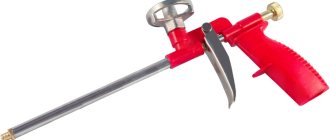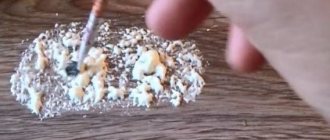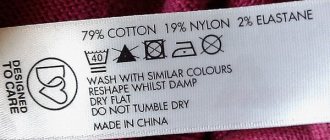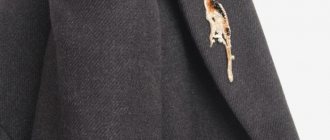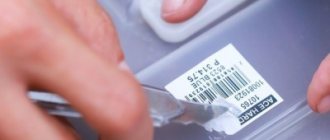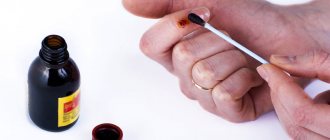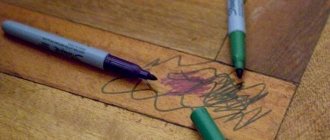Polyurethane foam is widely used for various construction and repair work. It is suitable for sealing cracks, filling openings in windows and doors, gluing building structural elements and household products, and performing a lot of important functions.
Often the work process is accompanied by contact of the sealed composition on various substrates, hands, clothing and hair. What effective means can you quickly remove polyurethane foam in solid and liquid form?
Effective cleaning methods
Removing the mounting compound from various surfaces can cause serious difficulties for specialists and novice craftsmen.
There are several effective ways to remove excess construction sealant residue:
- Mechanical cleaning. Fresh foam residues can be removed with any available tool - a sharp knife, scissors or a metal spatula. First, the protruding part of the sealant is cut off so as not to damage the surface. The remaining amount of the composition is cleaned with a napkin or a piece of cloth soaked in solvent.
- Cleaning with special solvents for mounting composition. Such chemicals are available for purchase in construction stores and supermarkets; they are designed to remove remnants of fresh and hardened sealant. The most popular products: Penosil Foam Cleaner and Premium Cured, Ultima Professional, Cosmofen 5.
- Cleaning with household solvents. The following preparations are often used to remove sealant residue from surfaces: white spirit, acetone, and car paint removers.
- Cleaning with the pharmaceutical preparation "Dimexide". It promotes rapid destruction of the foam structure, after which remaining dirt can be easily removed with a damp cloth.
- Cleaning with natural vegetable oils. They provide softening of hardened composition and delicate dry cleansing.
- Cleaning with water. Similar to oils, water helps to soak the sealant, after which the residue can be quickly removed mechanically.
Solvent removal
There are several methods used by professional installers. To clean foam contamination, they use slightly heated oil or a special cleaner (available at a hardware store), which is sold in aerosol cans. Cleaners are specialized, highly effective products designed to remove polyurethane foam. They are usually used after finishing work to wash professional pistols. The component of these solvents is Ethylacetat, which helps dissolve the foam. After using this product, your hands should be thoroughly washed with soap and be sure to moisturize with cream.
Removing polyurethane foam from hands
When using any type of sealant, you must follow simple personal safety rules - work in protective clothing and gloves. If you need to quickly wash off the foam from your hands, use the simplest and cheapest means:
- Household acetone.
- Alcohol for medical purposes.
- Petrol.
- 9% vinegar solution.
The fastest way to remove foam from the skin is with a cotton swab dipped in medical alcohol or gasoline. To do this, all problem areas of the skin are thoroughly wiped with a prepared swab.
If you can’t wipe off the foam, you can use a vinegar solution or household acetone.
Important! Allergy sufferers are advised to choose a safer method for removing sealant to avoid allergic reactions and skin rashes.
To safely wash foam from your hands, you can use alternative options:
- Finely ground salt. Dissolve a tablespoon of salt in a container with warm water, lowering your hands for 5-7 minutes. After completing the procedure, rub the skin with a soft sponge and rinse with clean water.
- Soap solution. The method is similar to the previous one, only a warm solution with the addition of a neutral detergent is used as a base.
- Heated vegetable oil. Lightly heat any vegetable oil and treat problem areas of the skin. Next, add a neutral detergent, foam slightly and rinse off the dirt. Rinse your hands with warm water.
What to remove, recommendations and precautions
All cleaning operations must be performed with gloves.
Respirator Source FFP1 with valve. Photo by Leroy Merlin
In most cases, polyurethane must be removed immediately, without waiting for it to cure.
Before working with the cleaner, you must carefully study the instructions. It is recommended to begin work with a test for the interaction of the solvent with the contaminated surface.
Chemical solvents are harmful to human health. Contact of aggressive components on the skin, hair, or eyes can cause health problems. Therefore, when working, it is necessary to take precautions , use personal protective equipment: overalls (set of work clothes), gloves, cap, headscarf or helmet, mask and respirator. PPE helps prevent substances from coming into contact with exposed parts of the body.
Work to combat contaminants of frozen foam must begin with removing excess mass , the upper part of the polyurethane is cut off with a knife, then you can begin the main cleaning.
To remove foam, it is recommended to use fluffy brushes rather than rags, which allows you to brush off the foam rather than rolling it off.
To eliminate the possibility of foam getting on objects surrounding the work site, it is necessary to either remove them from the room or cover them with film. Places that could not be protected can be lubricated with sunflower oil, which will reduce the degree of adhesion of the foam to the base.
Removing foam from hair
It is more difficult to remove the remaining sealant from the hair, because such a procedure requires endurance and calm. Unfortunately, some hair that is severely damaged by the sealant will need to be cut off. After removing problem areas of hair, you can use Dimexide.
The hair is carefully treated with Dimexide for 5-10 minutes, after which it is washed with mild shampoo. The final step is to use a mask to moisturize the hair, which will help prevent allergic reactions and damage to the hair follicles.
Acetone
This product can even dissolve hardened foam. To do this, soak a piece of rag or cotton pad in the solution, soak the stain thoroughly and leave it to soften for about 30 minutes. You should not treat painted surfaces, linoleum and laminate with acetone - it will wash off not only the foam, but also the paint. Small stains can be wiped with a cotton swab dipped in nail polish remover that does not contain acetone.
A frozen gun nozzle is cleaned as follows. We take a little acetone into a pipette or medical syringe and drop it into the hole. After 20-30 seconds, remove the softened polyurethane foam with a rag. You can also wrap cotton wool around a match or toothpick, moisten it generously in the solution and wipe the nozzle with it several times.
Removing stains from clothes
Cleaning polyurethane foam from clothes so as not to spoil things is a rather difficult and time-consuming task. To solve this problem, you can use the available tools:
- Purified gasoline.
- White spirit.
- Household acetone.
Cleaning clothing from sealant is carried out as follows:
- The contaminated area on the clothing is cleaned mechanically with scissors or a knife so as not to damage the fabric.
- Use a soaked rag or sponge to wash off any remaining mounting compound. To do this, just thoroughly moisten the stain and wait 2-3 minutes.
- After the sealant has been completely removed from the surface, the clothing should be washed with a large portion of detergent added.
What should you do if the foam on your work jacket or overalls has hardened? You can remove old stains with a special product – “Dimexide”. First, the foam is cut off with a sharp knife, and the stain is generously moistened with liquid and left for 35 minutes. After treatment, the clothes are washed delicately.
How to keep your nail gun in order
Despite all the possible methods for cleaning a gun, it is very difficult to dissolve hardened polyurethane foam in it. Many people do not take up this matter, but immediately buy a new device. To avoid such problems and save money, you should properly care for the tool after each use. Do not leave a used cylinder open with a gun inside, even for a short time.
If work with foam is completed, the structure should be disassembled. Rinse the tube while the foam is fresh. Acetone or white spirit will help with this. If the substance inside has dried out, the gun must be disassembled. Unscrew the crown in the seat. Pour solvent inside it. Then assemble the mechanism.
The dried consistency can be removed from the tube with a long wire. The dry mass must be crushed, then shaken out of the tube. It is important that the wire is rigid.
By applying the recommendations, you can maintain the device in proper condition during installation work. You don't have to buy a new gun every time.
Cleaning various surfaces
To quickly clean surfaces made of metal, wood, plastic, varnished, painted or matte, you should avoid using aggressive agents that can corrode the protective layer of the coating.
Experts recommend choosing the safest cleaners designed to solve this problem.
Laminate and linoleum
Special cleaners can be used to remove sealant residue from flooring such as laminate and linoleum.
The sealant is cut off with a knife, and traces of it are treated with a solvent applied to a clean rag or sponge. The product is left for 5-10 minutes, after which the residue is cleaned with a stiff brush.
Important! To remove the installation compound from laminate and linoleum, it is not allowed to use acetone, which can leave matte spots and stains on such coatings.
Carpets
If the foam has dried on a carpet, carpet or any fabric base, then it can be removed using varnish solvent, acetone or Dimexide. Use a sponge or clean rag soaked in liquid to treat the problem area of the coating. After this, the product must be washed or dry cleaned, which will quickly eliminate the unpleasant chemical odor.
Another way to remove sealant is to use a regular soap solution. The problem area is moistened with the solution and left to soften for several hours. The remaining foam is removed with a spatula or a stiff brush.
Doors
Removing sealant from the surface of doors is a labor-intensive procedure, especially if it is hardened.
To clean wooden or MDF doors, use Dimexide, soft brushes and sponges. The application process is as follows:
- The top part of the foam is cut off with a sharp knife so as not to damage the door leaf.
- All stains should be thoroughly wiped off with a sponge soaked in Dimexide.
- After treating the surface, the remaining sealant is removed with a brush or a clean piece of cloth.
Important! To hide traces of exposure to Dimexide, the door leaf is coated with a thin layer of varnish.
To clean a metal door from foam residues, you must perform the following steps:
- The sealant is carefully cut with a thin knife so as not to leave scratches or damage on the iron surface.
- A soft sponge is soaked in vegetable oil to treat problem areas.
- After the foam has softened, the surface is cleaned with warm soapy water and wiped dry.
Remove with chemical cleaning agents
Chemical agents that contain aggressive components show fairly high efficiency (depending on the cleaning technology used)
Acetone-containing products , such as nail polish remover, or acetone . The aggressive composition of acetone allows you to effectively remove fresh stains; hardened stains may be difficult to deal with; exposure will be required for 15-30 minutes. Acetone is not suitable for all surfaces. The product can be harmful to plastic surfaces; use the product carefully when dealing with stains on your hands; acetone dries out the skin and can cause an allergic reaction.
Slightly soluble cleaner Cosmofen 10 1 l. Photo by Leroy Merlin
White spirit is an organic solvent and a fairly universal product. White spirit is used to remove fresh and hardened stains from metal and plastic elements; it is suitable for exposure to fabric, but it may change color and destroy the structure of the material, depending on the type.
Cosmofen helps get rid of frozen contaminants from oil, glue, and polyurethane foam. It is also effective against fresh polyurethane. The product is actively used by installers of plastic windows and doors. Since the product is designed specifically for working with plastic surfaces. But it is also suitable for removing dirt from elements made of other materials. Cosmofen is sold in different concentrations; the lower the number on the package, the more concentrated the substance contained in the container.
Petrol. It is important to use refined gasoline. The product is suitable for removing fresh and dried stains. An alternative is kerosene. The products are suitable for working with various surfaces, as well as for removing polyurethane from fabric (clothing) and hands. Due to the strong odor of the substances, it is necessary to thoroughly wash your clothes and wash your hands after completing the cleaning work.
Solvents , products numbered 646 and 647 . The products will help with cleaning floors, uncoated metal surfaces, and clothing, but the substances should not be used on plastic, siding, PVC, MDF, or leather. Solvents can change fabric colors, discolor, damage structure and deform fabrics. Therefore, it is recommended to test the product for surface or fabric safety.
Carrying out work with aggressive agents requires the use of personal protective equipment and compliance with safety rules, in particular, manipulations should be performed in well-ventilated areas or in the open air. Depending on the state of contamination, exposure to substances of varying duration is required . Fresh stains are removed immediately; no special effort is required. But frozen contaminants require prolonged exposure, in most cases for no more than 30 minutes.
Special means
From special professionals use the following compositions for these purposes:
- Platina Cleaner: special cleaning tool for mounting guns; the same liquid can remove polyurethane stains from different types of surfaces, clothing, tools;
- Peno-OFF: will help get rid of traces of even hardened foam, varnishes and paints;
- Hobby: another solvent designed for cleaning sealant stains, packaged in a bottle with a dispenser;
- “Purex”: sold in the form of a paste made on the basis of acetone; does not leave marks on the surface.
Instructions for using products to remove dried polyurethane foam can be found on the packaging. If the solution is sold in a bottle, it must be shaken several times and then sprayed onto the area of contamination. Cleaning is carried out after 30-60 minutes. During this time, the sealant will soften and can be easily removed with a dry cloth.
If the gun nozzle is too dry, it needs to be disassembled. Pour the product into the tube from below. For better dissolution, the gun must be shaken well so that the mixture is well distributed over the surface. After some time, the sealant will dissolve and can be removed.
White Spirit
Produced by distillation of petroleum. Contains a mixture of hydrocarbons. Since this product can dissolve paints and varnishes, it is not allowed to treat painted surfaces and fabrics. It can only remove dirt from metal and glass surfaces. White spirit is also safe for plastic.
Just like acetone, this product has a pungent odor, so it is necessary to work with it in ventilated areas. It is undesirable for the product to come into contact with the skin. Therefore, you should wear gloves before treating stains.
Vegetable oil
Using heated vegetable oil, you can try to remove stains that have not yet dried from smooth surfaces or fabrics. It will also help to wash off dried foam that gets on your face or hands. To do this, vegetable oil is applied to the skin and left for 30 minutes. Next, the foam should be lightly rubbed with a cloth. Remaining oil can be easily washed off with regular soap.
You won't be able to clean your hair this way. Hair strands will need to be treated with dimexide. You can wash off the remaining construction foam with regular shampoo.
